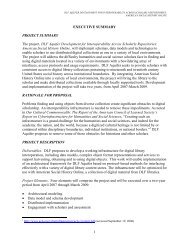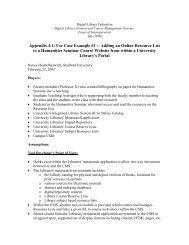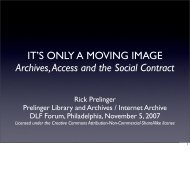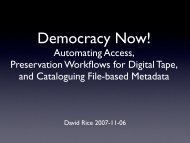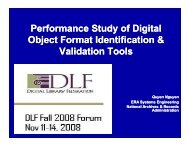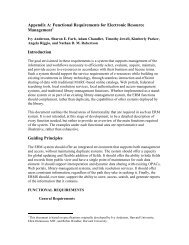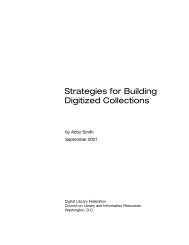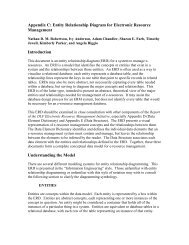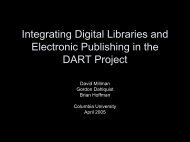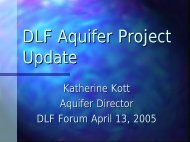Appendix B: Electronic Resource Management Workflow Flowchart
Appendix B: Electronic Resource Management Workflow Flowchart
Appendix B: Electronic Resource Management Workflow Flowchart
You also want an ePaper? Increase the reach of your titles
YUMPU automatically turns print PDFs into web optimized ePapers that Google loves.
Notes1. A decision to “proceed” indicates that the product’s content has been evaluated duringthe preceding consideration process and a serious effort to acquire the product shouldbegin.2. While the parallel processes represented on page 2 are shown as following after a trialperiod if one takes place, in some cases the parallel processes may begin during the trialperiod if one is held, and the trial will assist in answering questions raised during theparallel review processes.3. “Technically feasible?” represents a review of whether the product will functionwithout difficulty within the institution’s technical environment, or, if not, whether anacceptable level of effort will allow the product to function.4. “Business issues” embodies an extensive list of important concepts. Among the itemsthat might be investigated in this grouping are: price, archival needs, interface trajectory,vendor quality, branding capability, usage statistics, MARC record availability and price(if appropriate), instructional ports/accounts (if appropriate), OpenURL compliance,deep-linking capability, etc.5. It is entirely possible that the license will already be signed by this point, or that thelicense signing process is completely divorced from the order process. The“order/register/formally sign license” action point is completed when the institution hasformally committed to acquiring the product in every way necessary.6. The action of notifying catalogers and service administrators (e.g. proxy servermanager, OpenURL resolver manager, broadcast search service manager, etc.) may occurat any number of points. This item was placed early in the workflow diagram toemphasize that some products are problematic for service managers and early notificationis often very beneficial.7. “Routine product maintenance” encompasses a large array of functions not detailedhere. Among the functions included in this concept are the capture of usage statistics,troubleshooting and resolving problems, routine product changes from the vendor (suchas URL revisions), revisions to public documentation, etc.8. “Product review” on page 4 is simply a truncated form of the review of a new productthat occurs on page 2. The extent of the review may vary from product to product andfrom institution to institution.





